How To Get Dark Crust On Sourdough Bread
This post may contain affiliate links.
Want to know the secrets to a rich, dark crust on sourdough bread?
Here you'll find an in depth explanation on how to get a dark crust on sourdough bread.
Perhaps your sourdough isn't getting that rich, brown crust, no matter what you do? Or you're just curious how you can improve your sourdough crust?
In this article you'll learn how to get a dark crust on sourdough bread, without excessive browning, which can make your crust bitter and unpleasant.
There are many factors that go into the perfect, rich, brown sourdough crust.
But the first thing you need to understand is Maillard Reaction.
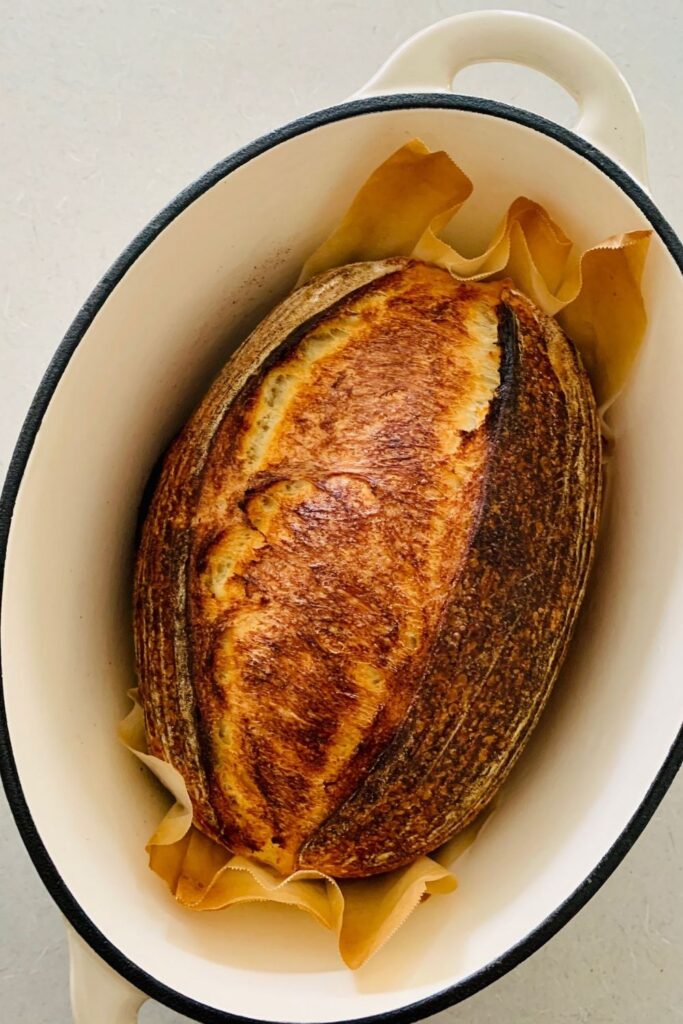
What Is Maillard Reaction?
You might have come across the term Maillard Reaction if you've read this sourdough glossary.
If not, here's a simple explanation:
The Maillard reaction is a chemical reaction between amino acids and reducing sugars that gives browned food its distinctive flavor.
Wikepedia
You'll find Maillard Reaction referred to when talking about browning bread, searing meat, toasting bread.
This complex reaction occurs when dough is subjected to heat. You can control and manipulate the way the reaction occurs by changing the amount of reducing sugars available when the dough hits the oven.
When the dough is placed into a hot oven, it's the specific baking temperature that causes the chemical reaction to occur.
Maillard Reaction must have the right temperature for it to brown the crust.
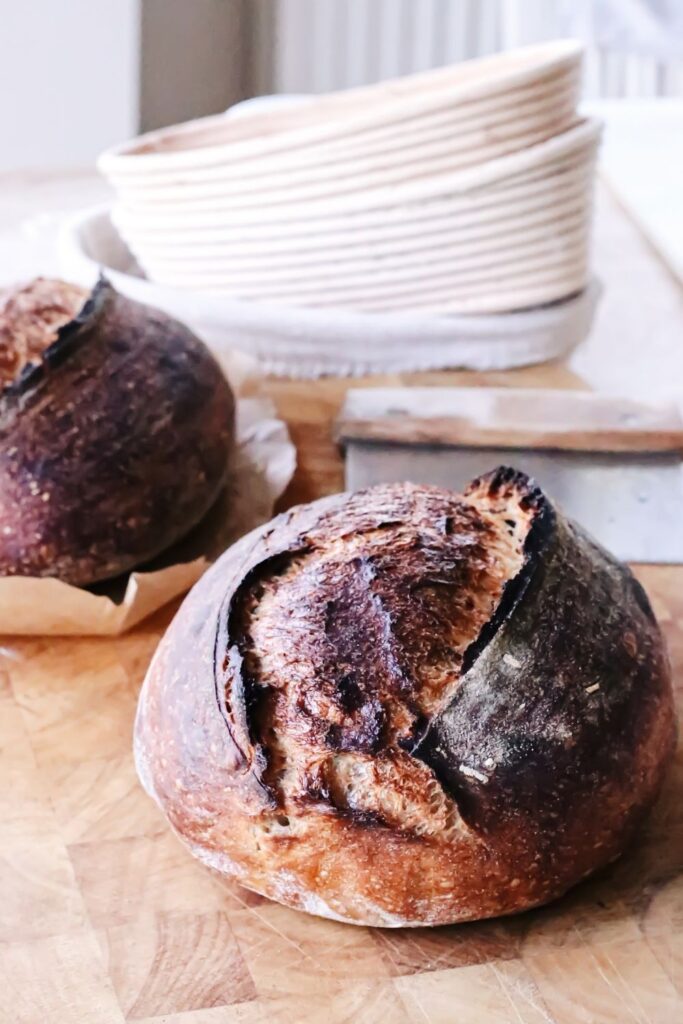
The Maillard Reaction is what gives sourdough its rich, dark crust.
Understanding this process is essential to knowing how to improve the depth of color on your sourdough crust.
If the crust on your sourdough is not browning, the expected Maillard Reaction is not happening.
There are a 5 things that you should consider when trying to get a dark crust on sourdough bread. They are:
- Fermentation - avoiding under and over fermentation
- Steam - ensuring adequate steam present in the baking vessel
- Baking Time + Temperature
- Using Diastatic Malt Powder as an ingredient
- Adding Fats, Oils and Sugars to your dough
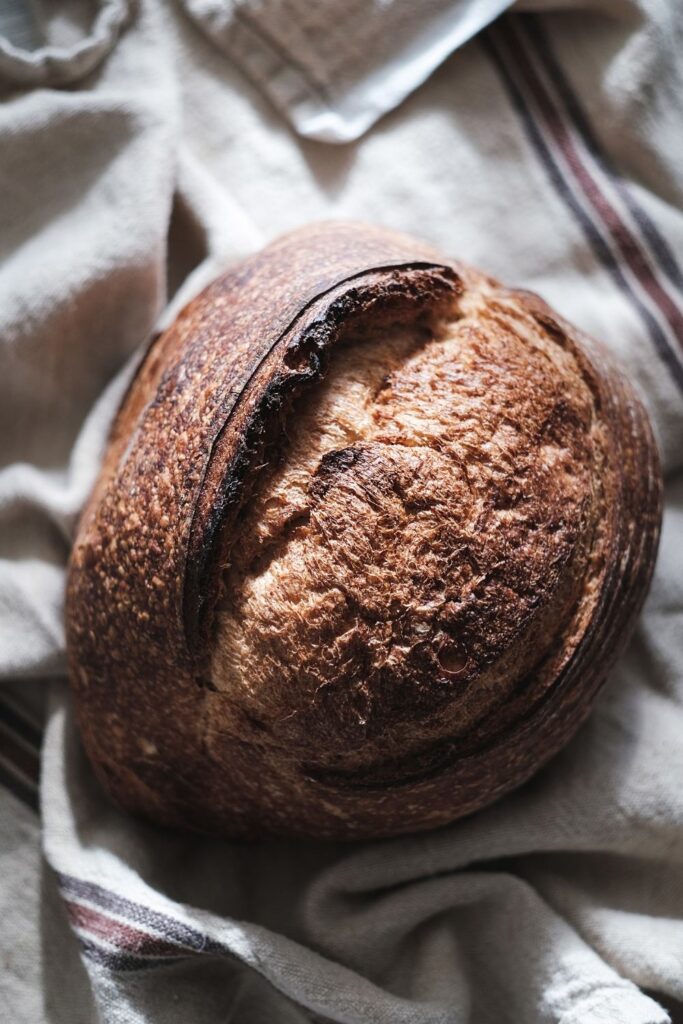
Fermentation Process
The fermentation process of sourdough is paramount to the depth of color (and flavor) of your sourdough crust.
If the fermentation is off, your dough will not have adequate reducing sugars to achieve a dark, rich sourdough crust.
You might notice that if your dough is under fermented, no amount of extended cooking time will make your sourdough brown up.
The sugars necessary for the crust to darken just aren't there. This is actually a very common sourdough bread problem.
It's really important to understand bulk fermentation and know when the dough is at the perfect point for shaping.
This will have a knock on effect to the final coloration of your sourdough crust.
Salt also has an important effect on the fermentation process and the resulting crust at baking.
Steam Your Sourdough Crust
Steam is so important when it comes to sourdough.
Creating the perfect steamy, hot environment is essential to getting a rich, dark sourdough crust.
As a home baker, using a Dutch Oven is the easiest and most consistent way to create the steamy environment needed to bake great sourdough bread.
Steam has two functions when your dough hits the oven:
- It stops the crust from forming too quickly, allowing your dough to expand.
- It reduces the surface temperature of your dough, increasing the reducing sugars
Steam inside the Dutch Oven reduces the surface temperature of the dough, allowing the bread to expand and rise before the crust eventually hardens.
If you don't have enough steam - or the oven is too hot - the crust will form too quickly. This will mean your bread will lack oven spring as it will be trapped by the early forming crust.
Similarly, the steam (often created by spraying the surface of your dough with water) is what gives you that deep, rich, dark sourdough crust. It mixes with the sugars still present in the dough.
Now this process can get really confusing - but put simply, the steam reduces the temperature of the dough which in turn ensures that the amylase enzymes can remain active for longer.
These enzymes increase the residual sugars in the dough. And increased residual sugars mean that the Maillard Reaction can occur and give you a nice dark sourdough crust.
Clear as mud, right?
The take away from this is that baking sourdough with steam is very important if you are wanting a rich, dark crust. It's also essential for a glossy, blistered sourdough crust.
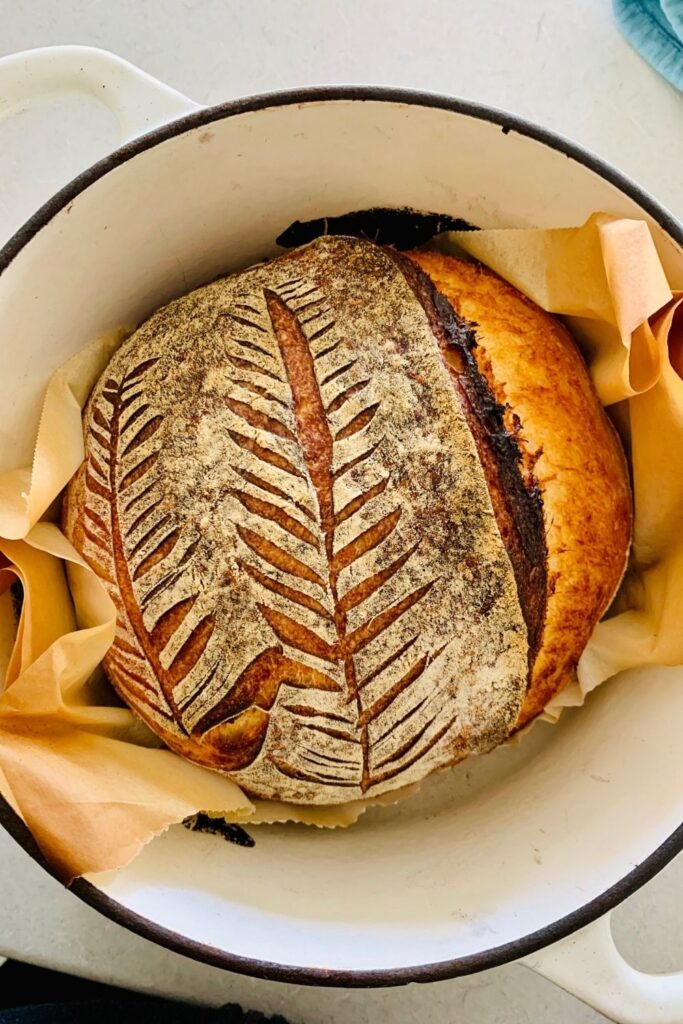
Baking Time + Temperature
Baking time and temperature are important to the browning of a sourdough crust.
Now it would seem that if your sourdough isn't browning, you could just increase the baking time or the temperature, right?
But we know that it's not this simple.
For example no increase in baking time or temperature will improve the browning of under fermented dough. In fact under fermented dough will often come out of the oven under cooked (and gummy) in the centre - despite extended baking time. The issue here would be fermentation, rather than baking time and temperature.
A better way to manipulate baking time is to slightly decrease the temperature and then increase the baking time.
This is the reason that some of the baking time for traditional sourdough is described as "lid on" and "lid off".
Baking the dough inside a Dutch Oven means we can increase the temperature to get maximum oven spring - without the crust hardening too quickly.
We can then take the lid off, but reduce the temperature slightly, to encourage further browning.
You can choose to leave the dough in the oven at a lower temperature for a longer time to get that deep, rich crust you're after.
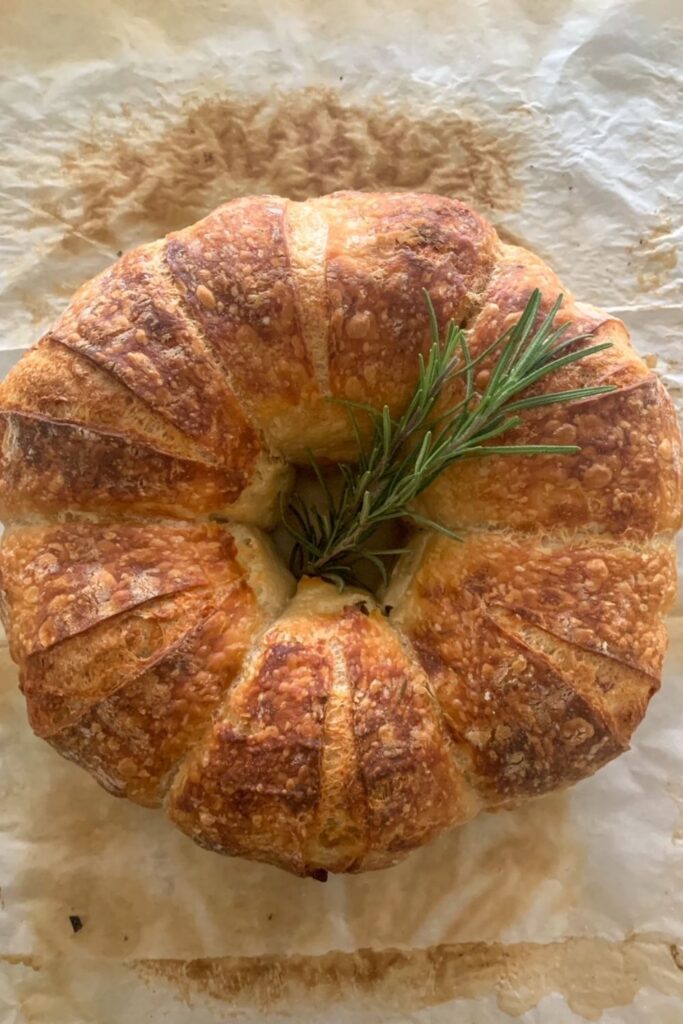
Diastatic Malt Powder
Diastatic malt powder can be used to encourage a deeper, darker crust on sourdough bread.
This malt is a grain that has been sprouted, dried and ground into a powder. It helps to feed and develop the yeast in bread making.
You can actually make it at home using these instructions.
For this purpose, you want to make sure you diastatic malt powder which is kilned at lower temperatures and has some of the enzymes still active.
It's these enzymes which are necessary to increase the reducing sugars when the dough hits the oven.
This ensures that you get an increased browning from the Maillard Reaction.
Now diastatic malt powder is actually added to most white flours. But you can still add some on top.
It's especially useful for whole wheat or whole grain flours.
You should add between 0.5% to 2% diastatic malt to total flour weight. So for 500g of flour you would add between 2.5g and 10g.
This percentage has been calculated using baker's math.
You'll find a full guide for using diastatic malt powder in sourdough bread here.
Adding Fats, Oils or Sugars
Another way to ensure you achieve a deep, dark sourdough crust is to use an enriched dough.
Any dough containing added fats, oils or sugars is considered enriched.
These additives will darken the crust of your sourdough.
In fact, you will need to monitor your sourdough more closely when using additives as they can definitely change how quickly the crust will change color.
For example, I find baking a Jalapeño Cheddar loaf a little faster than regular sourdough. The sugars from the jalapeño and fat from the cheese mean that this sourdough doesn't need much time with the lid off at all.
Some ingredients you could add to encourage a darker sourdough crust are:
- Full fat milk powder
- Swapping water for full fat milk
- Butter
- Sugar
- Egg or milk wash before going into the oven
- Adding cheese into the dough.
All of these things will make your sourdough brown a lot faster and deliver a deeper, darker crust.
Because these ingredients do encourage browning so quickly, you will need to be careful with enriched dough.
Sometimes longer "lid on" time is helpful in ensuring you don't end up with a burnt, bitter crust.
You'll find a full guide to adding sugar to sourdough here.
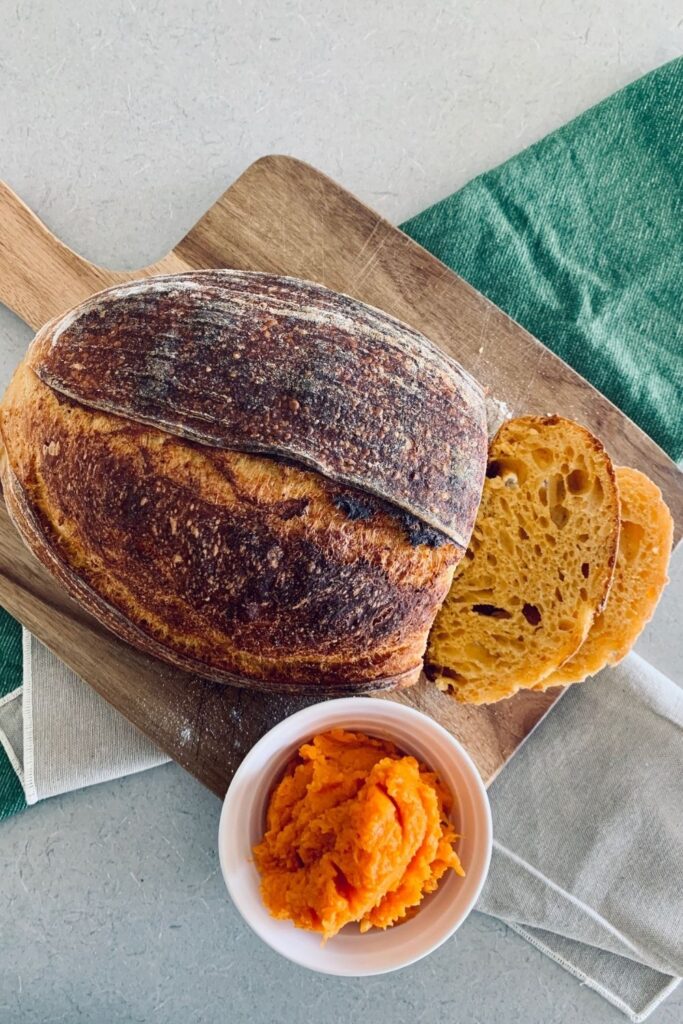
How Dark Should Sourdough Crust Be?
Honestly, the darkness of your sourdough crust really is personal preference.
Some people prefer a "blonde" loaf, whereas others like the deep, rich, golden brown crusts.
Somewhere in the middle is where sourdough should be. A little crunchy, a little chewy and full of flavor!
Ultimately, the joy of baking your own sourdough bread means that you can bake it to suit your own tastes.
What is perfect to you may be considered underdone to someone else.
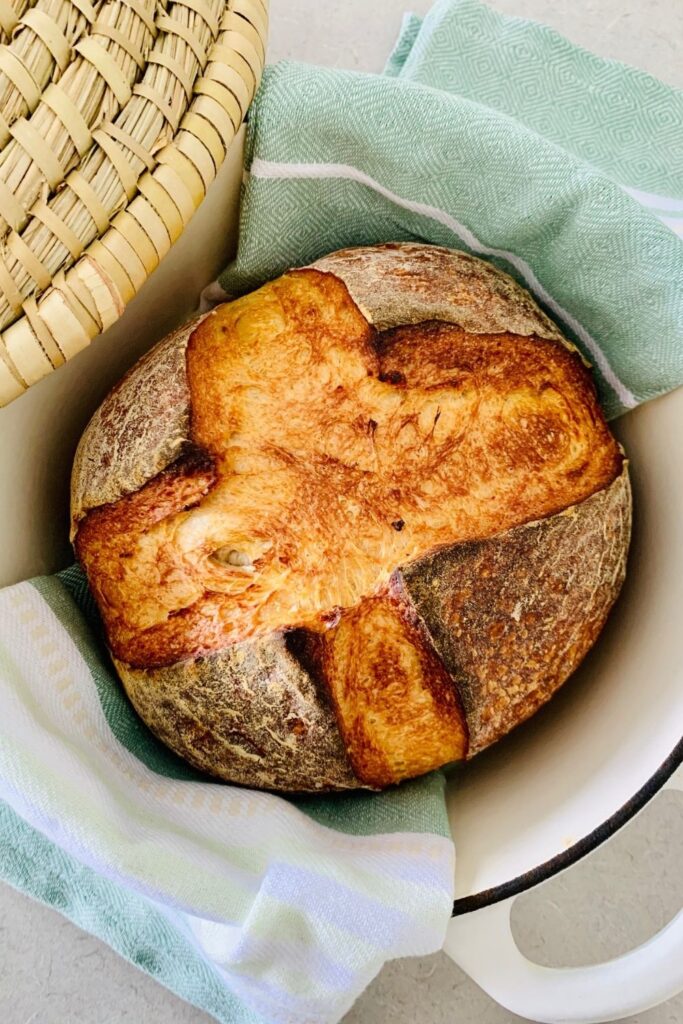
Further Reading
If you enjoyed this article about how to get a darker crust on your sourdough bread, you might like to read these:
- Learn how to get a thinner, crispier crust on your sourdough bread.
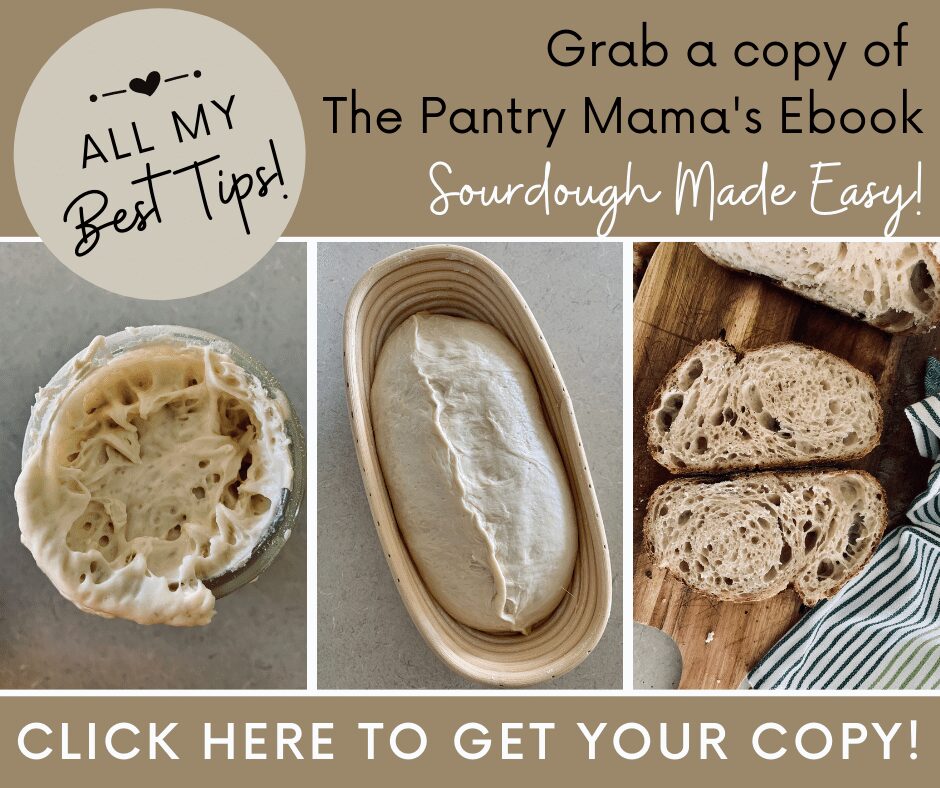
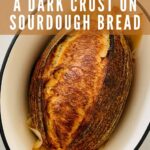
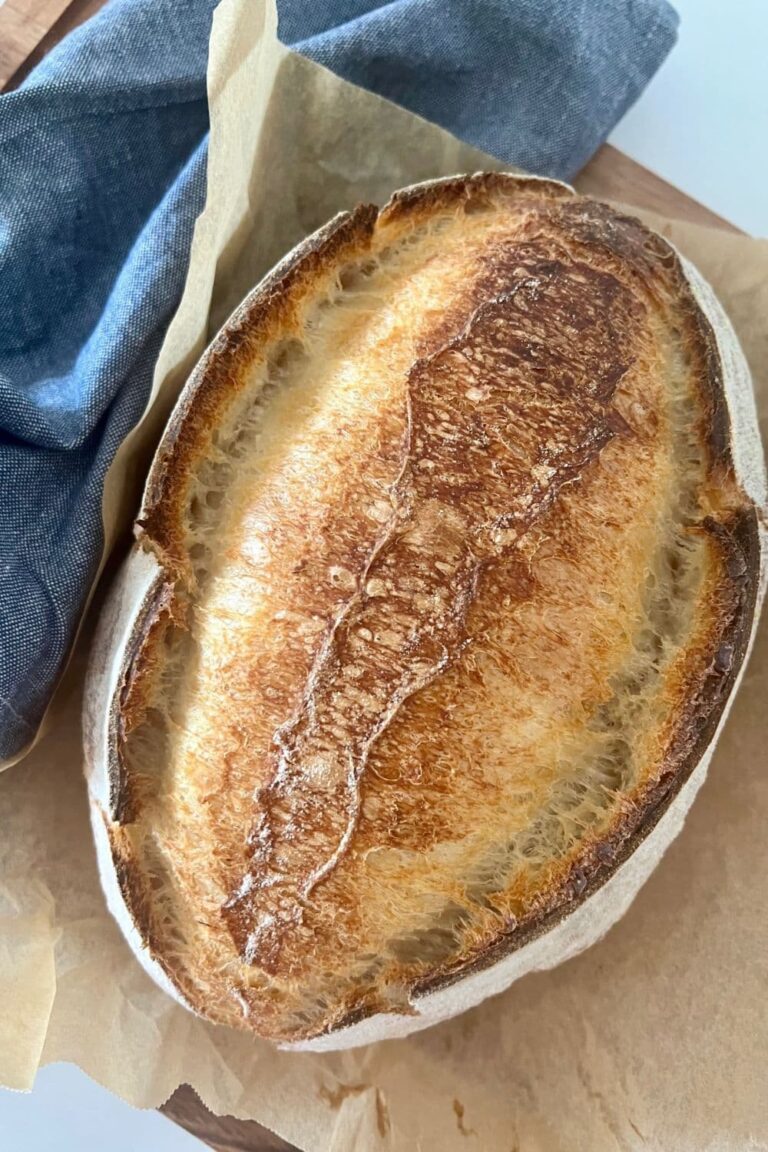
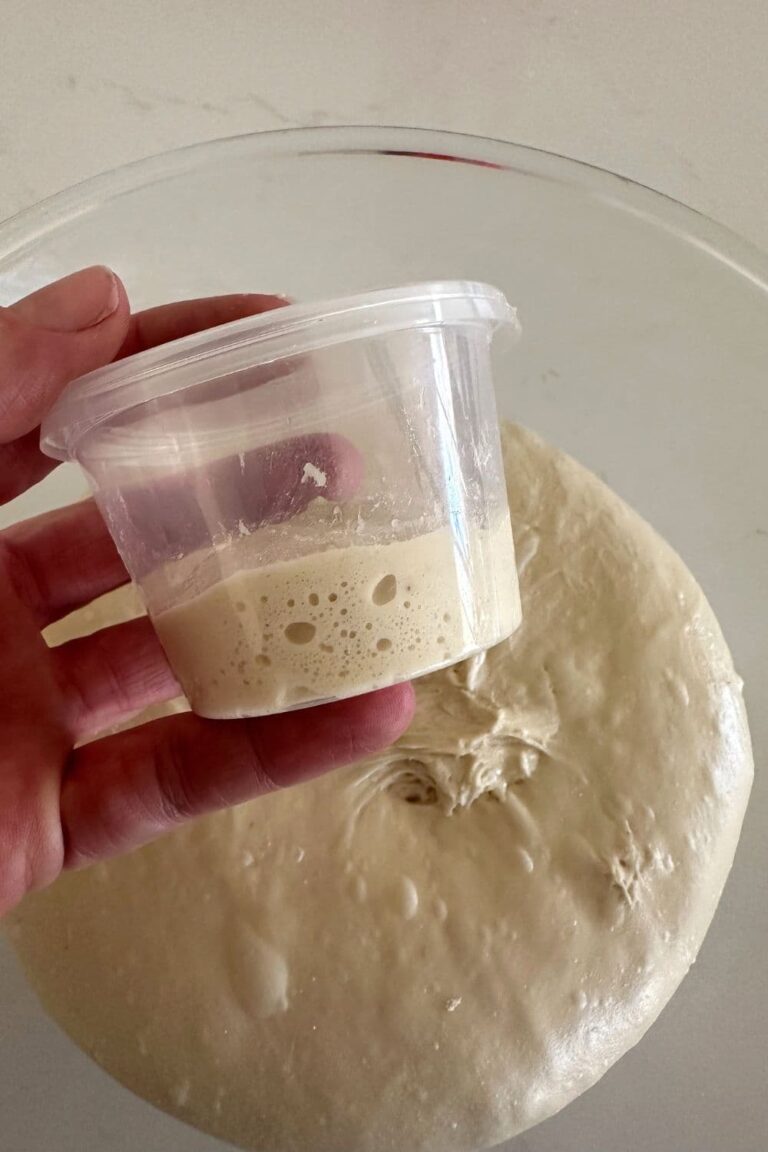
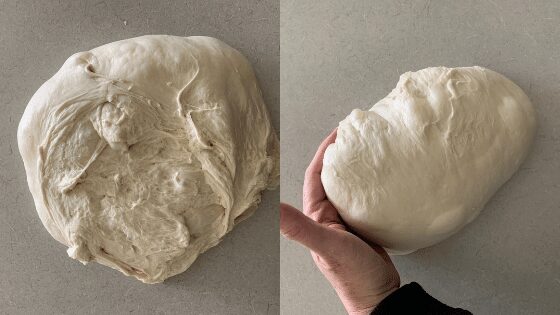
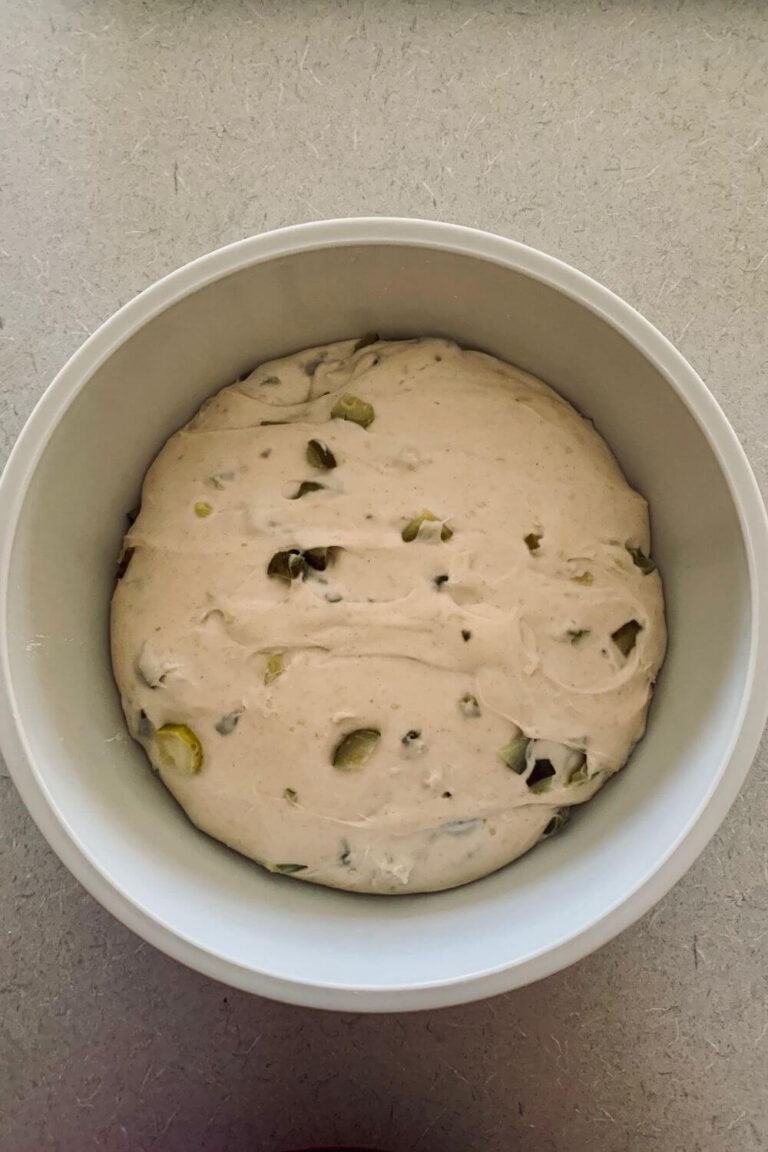

I preheat my Dutch oven for half to an hour at highest temperature. But what temperature should oven be set to once I have added the sour dough for the half hour with lid on, so it gets the steam effect as mentioned above? I have been leaving oven at the highest setting. Maybe that is resulting in less oven spring as dough crust is cooking too quickly? I can't seem to find this information in your eBooks or on your website.
Thanks